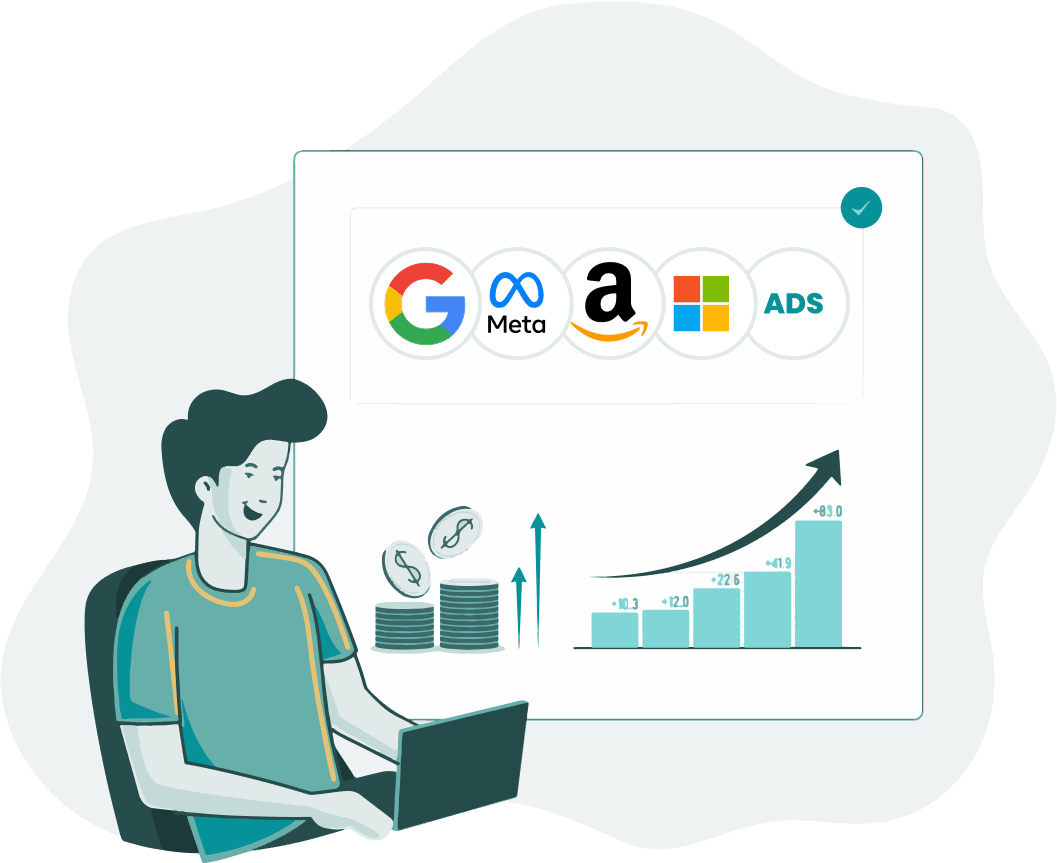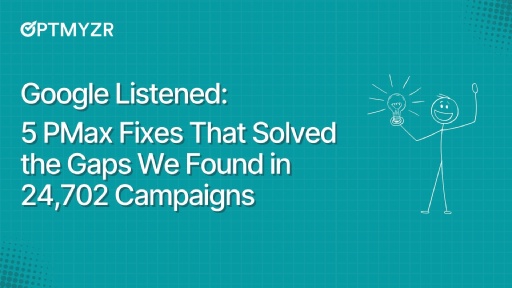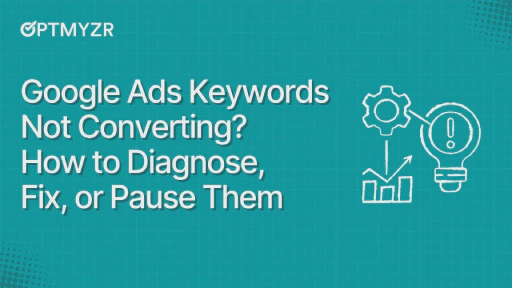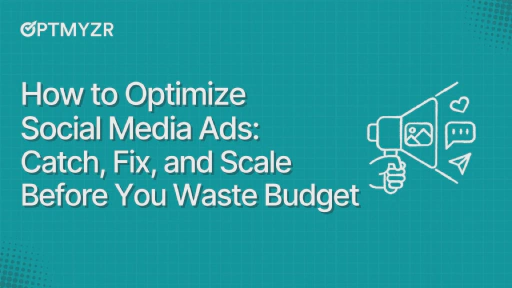Automation and AI are steadily taking center stage in modern advertising. They are deeply integrated across almost every stage of campaign management, including campaign creation, bidding, audience targeting, optimization, and reporting.
While these systems are necessary for scaling efforts and improving efficiency, the catch is that many of these tools start to resemble black boxes. You’ve very little control and visibility into what’s happening. This makes it harder to align performance with real business goals.
The pace of AI innovation in PPC is only going to accelerate, and we need to make sure we layer these systems with human insight, so we’re not just letting the machine take over, but using it to make smarter, more strategic decisions.
In this blog, we’ll explore how the human + machine approach helps you maintain visibility, adapt with confidence, and drive stronger campaign outcomes in an increasingly automated world.
The automation black box
Automation can handle repetitive tasks by following set rules, like adjusting bids or pausing ads. At the same time, AI goes further, learning from patterns in data to make predictions and optimize decisions.
The problem is when marketers rely on these systems alone without human oversight. It leads to missed context and inefficient spend because we’re relying on decisions that prioritize machine logic over actual business goals.
For example, an automated bidding rule might reduce bids in response to a sudden drop in conversions. This makes sense if the drop is due to changes in user behavior or interest.
What if it’s not the full picture?
What if conversion rates dropped not because people aren’t interested in your product anymore, but because of a sudden external factor, like a payment gateway outage or a tracking error?
Even though some AI models can factor in landing page experience over time, they may not be able to distinguish between a temporary glitch and a real shift in user behavior in the moment. As a result, the system reacts to the symptom, not the cause—lowering bids, cutting traffic, and ultimately hurting campaign performance for the wrong reasons.
Meanwhile, the real issue goes unaddressed.
Human context still matters
AI can detect what’s happening, but often lacks the context to explain why it’s happening. That distinction is critical.
Consider Betty, who manages ads for a mortgage lender. She switches to Smart Bidding with a goal to get more leads at a lower cost. Initially, performance improves. Over time, however, she notices that while form submissions have increased, actual mortgage approvals have declined.
The algorithm had been optimized for volume, not lead quality.
Betty and her team review the data to identify the characteristics of high-converting leads. They adjust the system’s inputs to reflect those insights.
Now, Smart Bidding focuses on high-quality leads. Form fills decrease, but closed mortgages go up.
Takeaway: Without human input, automation might focus on the wrong objectives, such as generating more leads, without considering the quality or relevance of those leads. |
Automation layering makes humans and machines work at scale
Automation delivers the best results when it’s paired with human strategy. That’s how advertising becomes smarter, more adaptable, and truly performance-driven.
That’s where automation layering comes in. It involves placing a layer of business-aware logic over platform automation to guide decisions more effectively.
You can guide these systems using custom rules, data, and signals that reflect real business goals rather than relying solely on generic campaign metrics.
“The systems are smart, but they aren’t strategic. That’s your job — to teach them what success really looks like for your business,” shares our CEO, Frederick Vallaeys. |
What makes automation layering important?
Automation layering gives you a way to stay in control, even in an increasingly automated, black-box environment. It enables you to:
- Adapt quickly to changes in platform rules and policies
- Regain strategic oversight of automated decisions
- Feed the machine high-quality data and real business signals
Optmyzr’s platform is designed to empower you to work with automation rather than just passively using it. The goal is always to give you more control over how automation decisions are made and to customize at scale.
Here’s a quick look at some of Optmyzr’s key features that give you the flexibility to act as the strategic layer that platforms like Google Ads can’t replicate:
1. Rule-based optimizations
Optmyzr’s Rule Engine is our solution to the question ‘How to automate while still being in control?’.
It keeps your campaigns running smoothly, giving you precise control over your campaigns with automation working like clockwork in the background. You can use simple ‘if-this-then-that’ statements to define custom rules to monitor your campaigns, keywords, ad groups, and more. All with minimal manual intervention from your end.
Our customers in fact, have used Rule Engine in multiple ways to bypass Google Ads limitations. Be it to stay on top of budgets, monitor keyword match types, or adjust ROAS/CPA targets based on the weather.
You can either choose from a list of pre-built strategies to make things easier, or use custom strategies based on your business goals.
{{< figure src="/forestry/rule-based-optimizations.webp" alt=“Rule based optmizations” >}}
{{< youtube id=“2U_5BMvD5eo” title=“How to Harness Rule Engine” >}}
2. Budget automation with seasonal logic
Optmyzr gives you the flexibility to adjust ad spends automatically during periods when your business is likely to see more (or less) activity, like holidays, sales periods, or specific months that typically perform better.
You define rules that:
- Increase your budget during busy seasons (e.g., November–December)
- Pause or limit spending when performance drops
- Shift budgets between campaigns based on real-time results
Once these rules are configured, you simply have to define the right performance triggers and time frames and define what should happen when they are met.
3. Campaign creation powered by your data feed
If you own a business where your product catalog or list of services change quite often— with new items, price drops, or stock updates, Optmyzr’s Campaign Automator can be quite handy.
It can automatically build entire campaigns for you based on your data feed. The best part is that if something changes in your feed, say a product goes out of stock, Campaign Automator will auto-update your ads without manual intervention.
You can tell it to do things like increase bids for discounted items or pause ads for sold-out products, based on rules you set. It takes care of those repetitive, manual parts of campaign management while you focus on the most important part— strategy.
{{< figure src="/forestry/campaign-automator.webp" alt=“Campaign Automator” >}}
4. Custom alerts and scripts
Optmyzr lets you set up custom alerts to stay on top of key changes. For example, Anomaly Alerts notify you automatically when metrics like cost, impressions, or clicks shift unexpectedly, so you can catch issues early without constant manual monitoring.
You also have access to enhanced scripts that can help you automate and streamline tasks. For example, the Check Destination URLs script scans landing pages for errors like 404 or 500, generating a report on problematic links. This helps you quickly fix or remove broken links to ensure a smooth user experience.
Together, these features reinforce the “human + machine” model — enabling you to not just monitor but add meaningful insights and logic to your campaigns, even in an increasingly automated ecosystem.
What to do? Build a smarter, more agile PPC stack
Now is a good time to take a step back and re-evaluate how automation, data, and tools are being used in your PPC workflow. The key question is—are you guiding automation with your strategy, or just letting it run on autopilot?
Whether you’re reassessing your current setup or looking to future-proof your campaign, here’s a simple checklist to guide your next move:
- Think beyond systems that obscure the ‘why’ behind campaign performance. Opt for platforms where every rule, logic, and recommendation is visible and adaptable
- Use business signals and contextual data to infuse human context into automation. For example, feed CRM data and offline conversions back to Google to teach it how to identify ‘real’ conversions
- Review bidding and attribution strategies to see if they are aligned with real profit metrics and to understand what’s actually working
Rebuild smarter. Automate better.
Automation is everywhere and will continue to grow exponentially. The key is in learning how to use it. Not blindly. Not in isolation. But, with a human-first approach that guides and amplifies what machines can do.
And this is precisely why the most successful advertisers are the ones who combine automation with human insight, creativity, and control.
So if you’re looking for a smarter way forward, now’s the time to future-proof your PPC stack — with tools that are transparent, adaptable, and built for how you work.
Ready to experience automation layering in action? Sign up for a free 14 day trial with Optmyzr.









